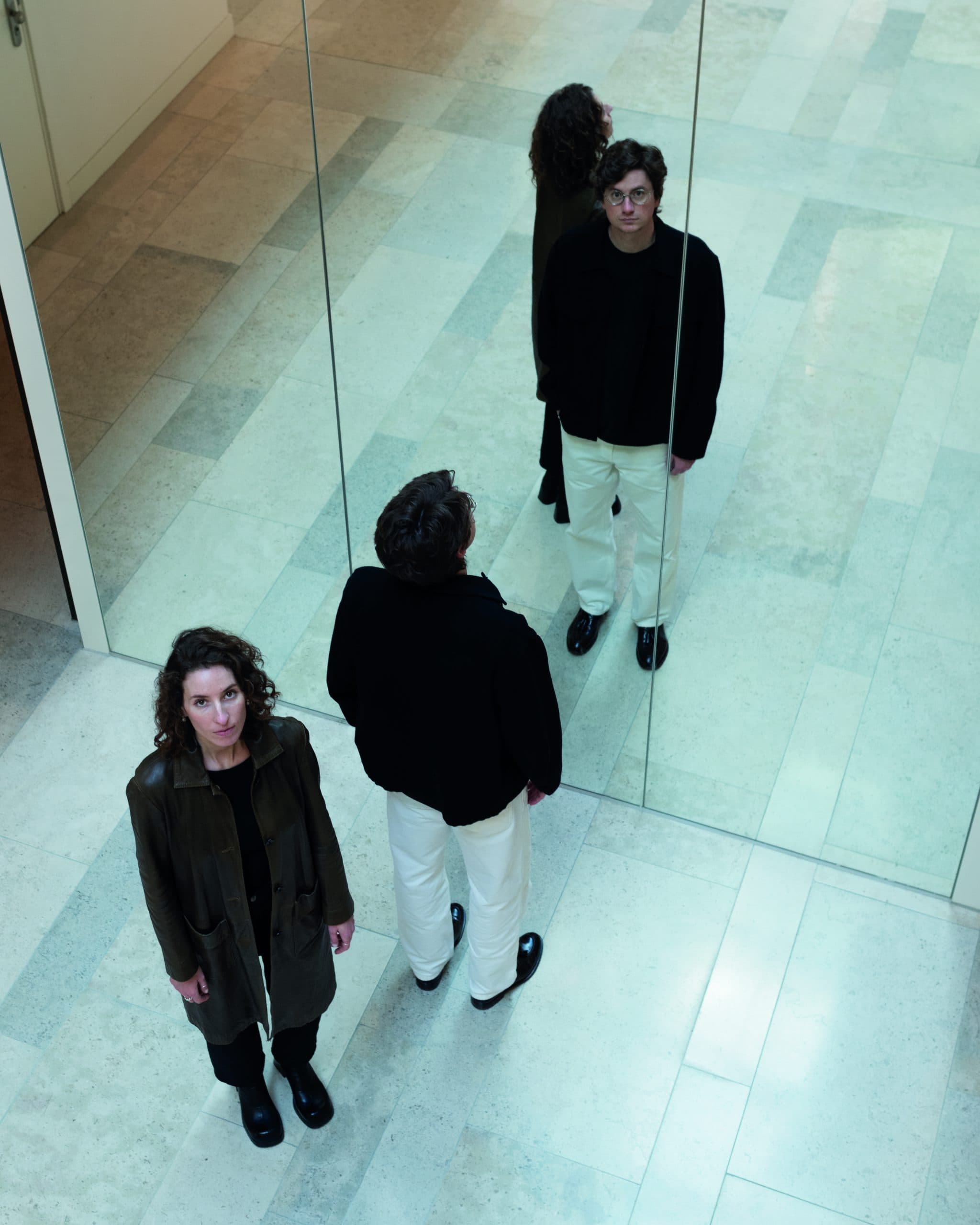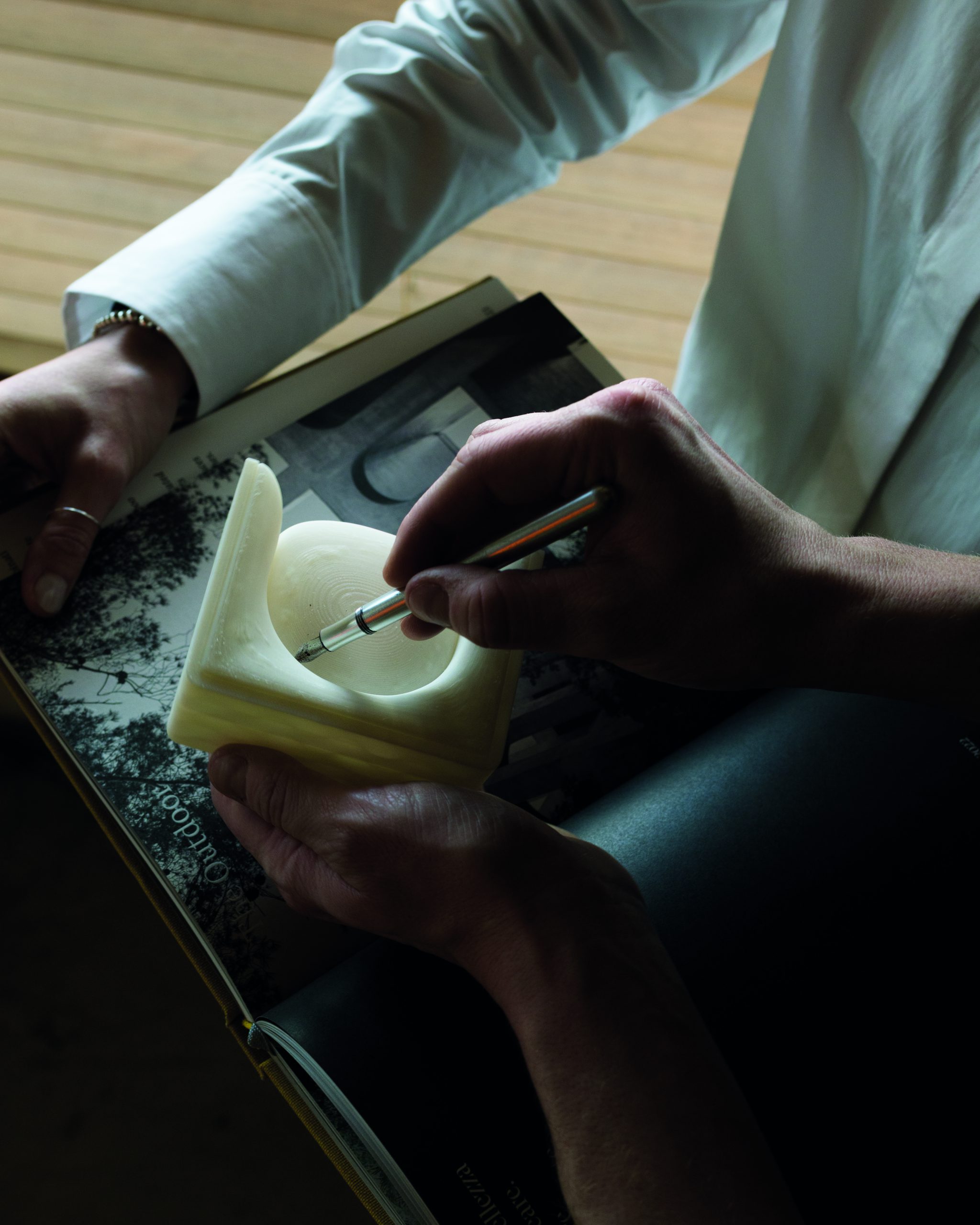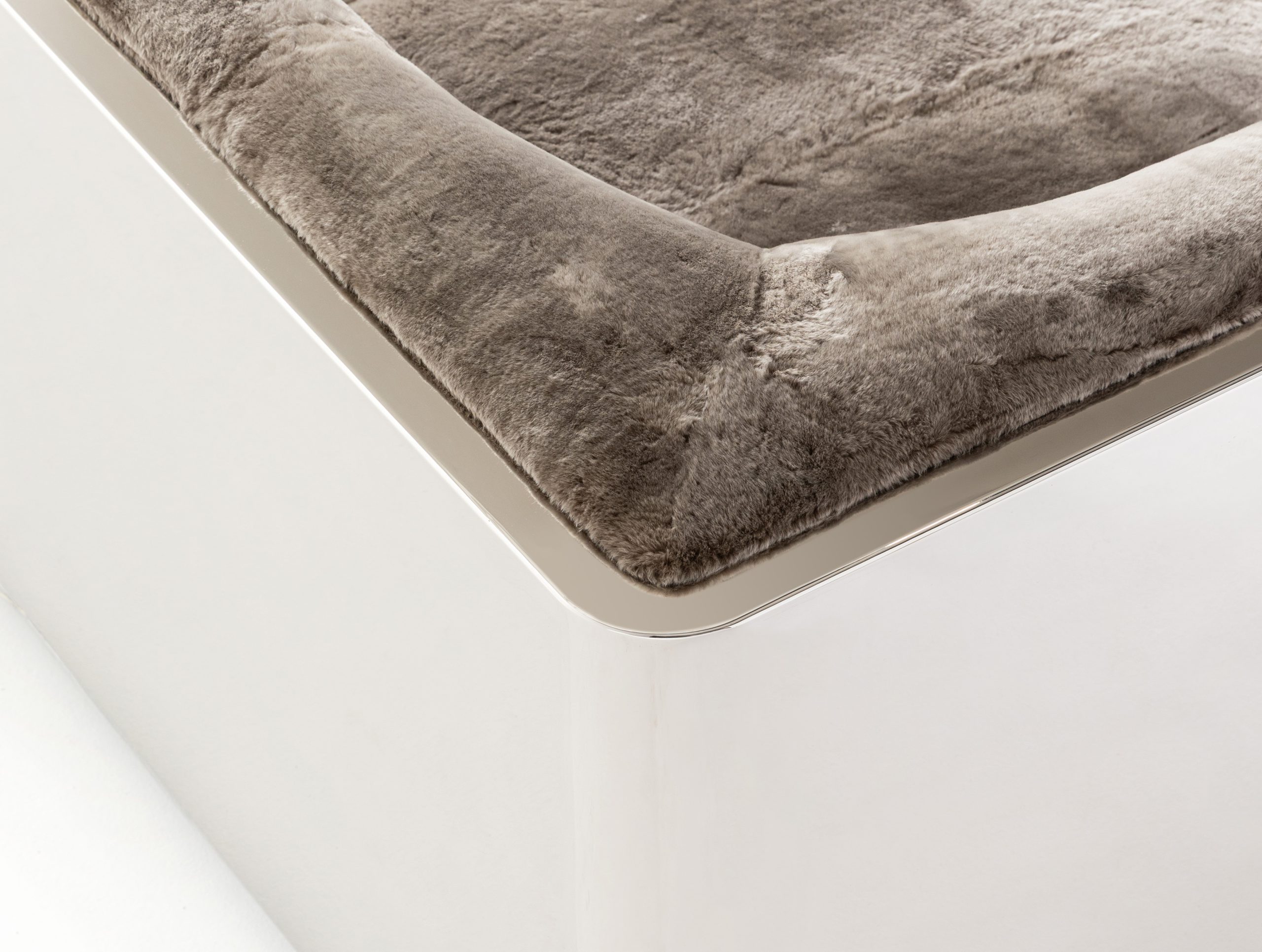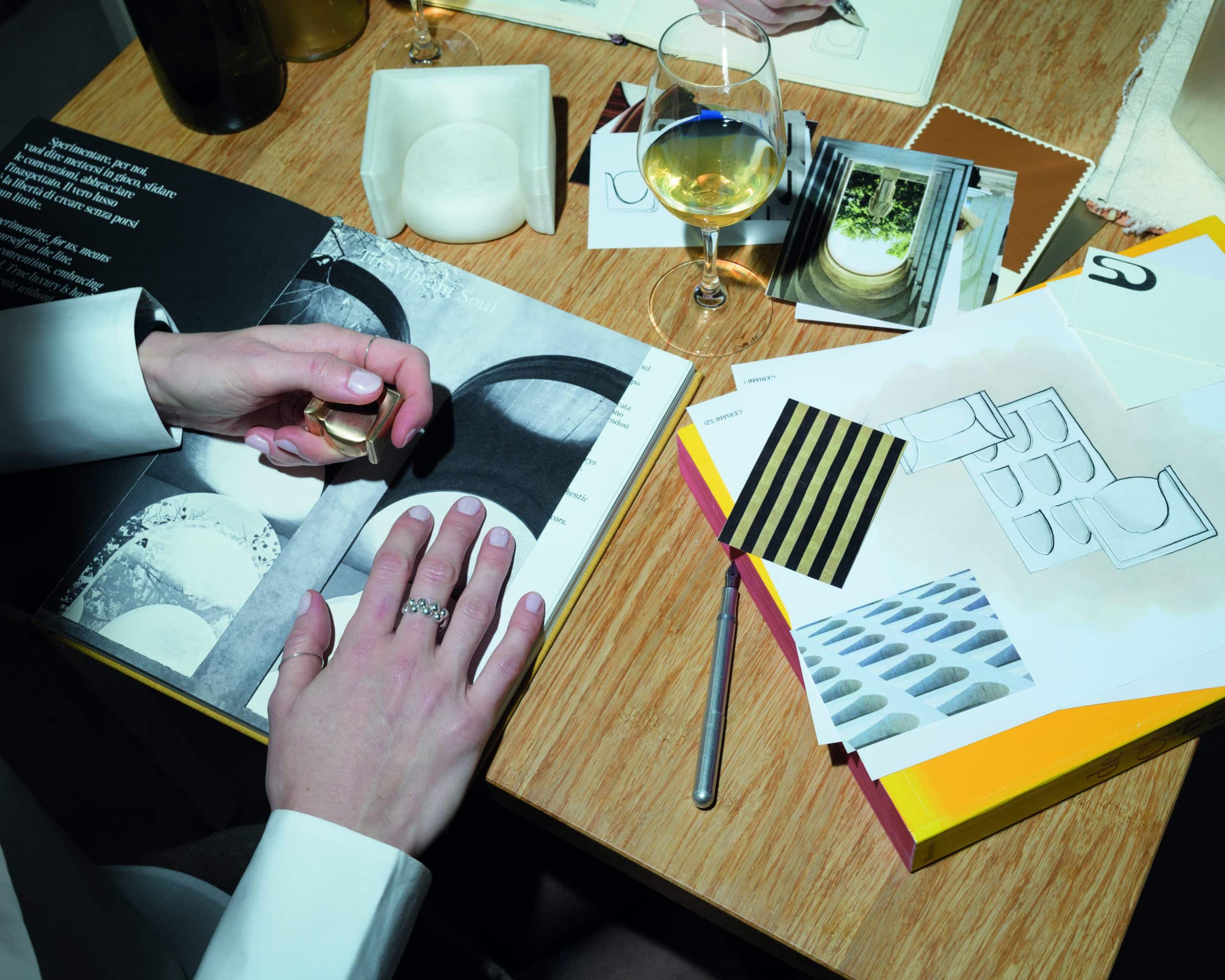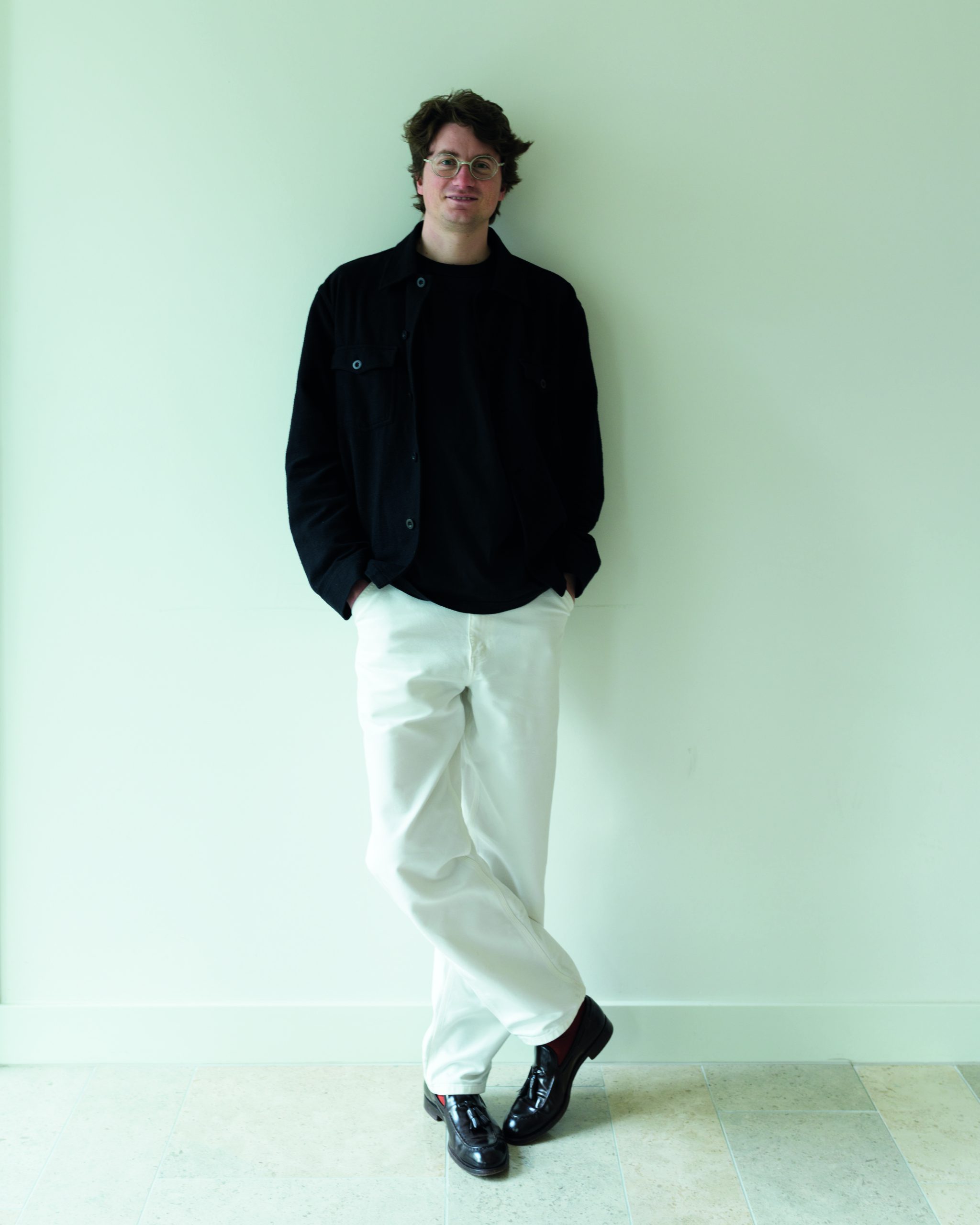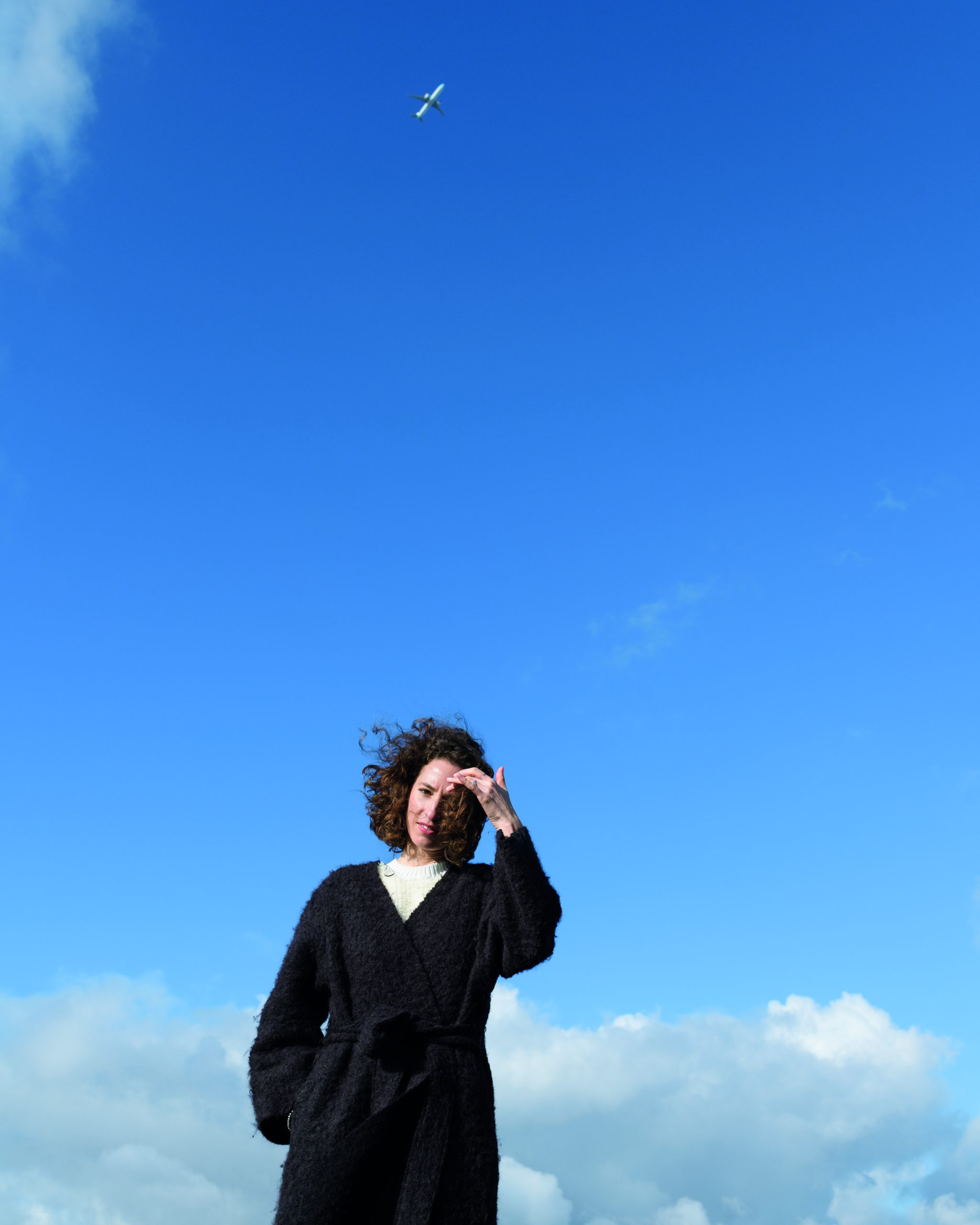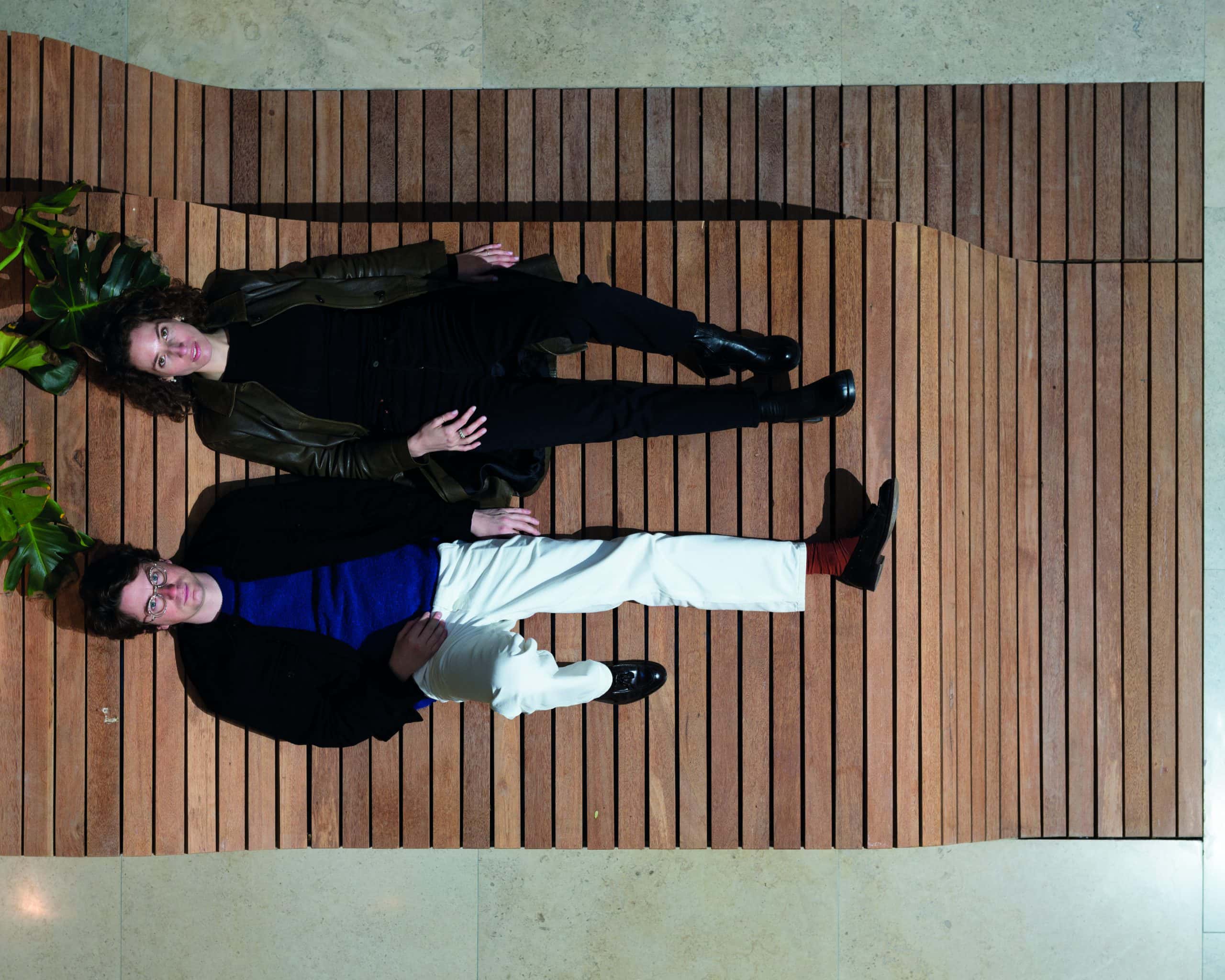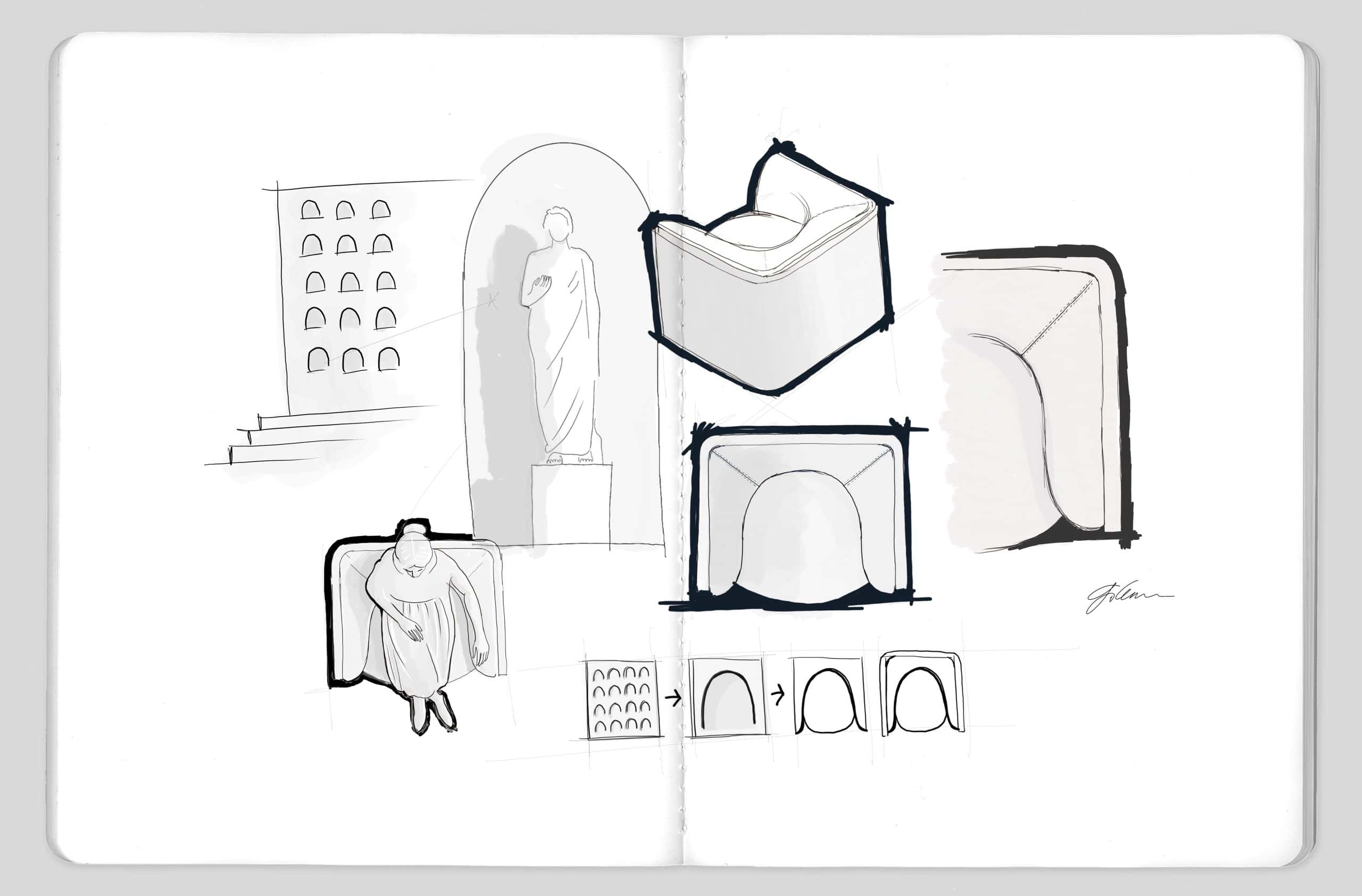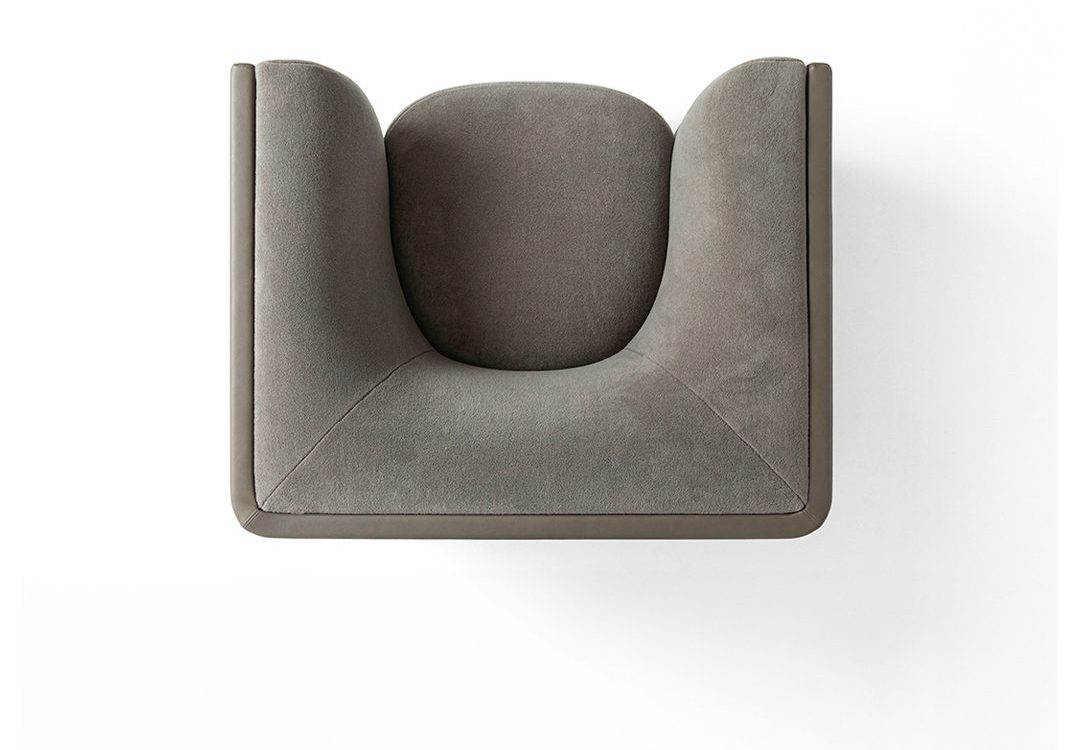There is a big difference between being young and being naïve, just as there is a big difference between being a new studio and being an inexperienced one. Gilberto and Ania recently founded the Ceriani Szostak studio, but in a way, they have been working on it for 10 years already. Their paths first crossed nearly a decade ago at Marcel Wanders’s studio in Amsterdam, and since then, they embarked on a journey that eventually veered towards the uncertainty of an independent adventure in the world of design. Gilberto, Italian, and Ania, Polish, chose to remain in the city where they first met – at a relative distance from the Italian system. Far enough to carve out their own design path and voice with freedom, yet close enough to still collaborate with Italy without significant logistical hurdles. Looking at Gilberto and Ania’s work today, one would not guess they are at the beginning of their journey. There is a maturity and meticulous attention not only in the execution of their projects but also in how they present their work – traits of those who, over the years, have refined both their design tools and their storytelling abilities. It is as if they had taken a long run-up, during which they gradually sharpened their method and approach, which is now recognised and sought after by companies. They navigate seamlessly between industries, collaborating with both product design and fashion brands – proof that their core focus is the dialogue with the client. From this dialogue emerge projects deeply rooted in the client’s history and expertise, like a tailor-made suit that balances their own design language with that of the brand. It is worth keeping a close eye on Gilberto and Ania’s journey, because as of today, their step is that of those who know exactly what they are doing and where they are headed.
Tommaso Caldera: So guys, let’s start from the beginning. What’s your background?
Gilberto Ceriani: In a way, we can start from when we met in Amsterdam at Marcel Wanders’s studio. We worked there for 11 years and that’s where we met, basically. We were working on different projects in the beginning, and then we also started to work together. It was a really natural path for us, passing from working together in the studio to starting to do our independent projects. We still collaborate on specific projects with Marcel Wanders, but our main focus today is our studio.
My parents have a lighting showroom outside Milan, so I grew up surrounded by design from a very young age. My father comes from a family with a tradition of making and selling Murano chandeliers. When he took over the company from his father back in the ’80s, he decided to shift the company focus from Murano chandeliers to contemporary design. So I literally grew up speaking about design.
When I had to choose what to study, design was the only option for me. That was my thing. I studied in Milan and then I had the opportunity to start an internship at Marcel Wanders’s studio. I was 23 at that time, and I didn’t know how to speak English, but I managed somehow to get the internship and moved to Amsterdam with my cargo baggage. It was great — and with time, I became associate creative director.
A lot of people say, “Ok, but that was only one experience.” On the other hand, we did so many different projects with so many different clients in so many different ways — it was a very rich experience. When the Marcel Wanders Studio closed, a client we had worked with recognized our value, and some gave us briefs with creative freedom. For us, it was a dream.
Ania Szostak: I knew from a very early age that the creative path was the one I wanted to take. As a child, I loved painting and drawing, and that passion led me to study design at the Academy of Fine Arts in Warsaw. I truly appreciated my time there, as the early years were dedicated to artistic exploration, allowing us to develop our own creative identities.
Later, we combined this with more rigorous design training, learning how to translate ideas into tangible products. This duality has been a constant in my journey — from my experience at Marcel Wanders Studio to the work we are now developing in our own studio. It’s a balance between structure and creative freedom, where design is not only about precision and functionality but also about storytelling and emotion.
Tommaso Caldera: I know what the design system is like in Italy and I know how hard it is for a young designer to start their own practice. How hard is it for a young designer in the Netherlands to start their own studio, and what are, in your opinion, the main differences between the Italian and Dutch systems?
Ania Szostak: Of course, it’s not easy. But we already had a few years of experience, and we did a lot of projects during those years. So we also had a network that we could reach out to and discuss potential collaborations.
Gilberto Ceriani: Yeah, that was a very important asset that we had. But in general, you know, although design is a very cool and interesting working path, it’s not only about designing beautiful things — it’s also really about discovering what you like, who you are, and putting that into an object. It’s not just a job.
If I compare the previous generation of designers to today’s designers, the competition is much higher. Today, to innovate, you need more than just a good idea.
To reply to your question about the Netherlands and Italy: I think Italy is the center of design, with a high concentration of studios and clients, making it a highly competitive market. In contrast, the design market in the Netherlands is smaller, which can make it easier to get noticed since there is less competition.
For us, the solution is to be in Italy to work with certain clients and to be in the Netherlands with other clients. Of course, it’s not easy — it’s actually double the problems — but at the moment, it’s working well for us. We also want to keep it a little bit more international. Ania is Polish and I’m Italian. We try to put this into the projects, and we really want to consider it a value.
TC: My next question is about the process and about how you work day-by-day. Since this job is something strictly related to your own person, how do you merge your two personalities and sensibilities into the process?
AS: It has been quite natural for us because we have known each other and worked together for over ten years.
GC: Merging two different mindsets is not always easy, but with mutual respect and trust, it becomes a strong and productive collaboration.
TC: Do you have different skills so at the end it’s just a matter of combining different capabilities?
GC: Yes, that’s also a key point, we’re really complementary. I’m more macro and Ania is more micro, I would say.
AS: And he’s the extrovert and I’m the introvert.
GC: She has a sort of laser view on details! Of course there are arguments but we are managing very well, I must say.
TC: Quoting your Instagram account and your website: ‘crafting ideas through meticulous research’. Tell me about your approach on research and investigation, because this is something that requires a lot of time and energy. Do you think that nowadays design and fashion companies have time for that?
AS: It’s very important and I hope that the companies dedicate time for it. That’s a foundation for us because we like to design things and solve problems. For me every project is like a funnel, from a lot of research, ideas, discussions, interactions and trials we narrow it down and we synthesise to arrive at the final design.
GC: We really work a lot, really dig into things. We don’t know what we’re going to do and we learn by doing, by experimenting, by researching, by designing a lot of ugly things; we understand that maybe in this ugly stuff there is something beautiful and we develop it. So, research is not only about researching in the real world or on the Internet, but also in what we actually want to do.
I think there was a moment, a few years ago, when we got lost a bit, going too fast and taking decisions in a fast way and this never led to innovation. An independent movie (Anora) has just won the Oscar and I think something similar in the design field is going to happen. In my opinion, quality will win over speed.
TC: Let’s see! I know you have a strong collaboration with Fendi Casa. How do you usually develop a project or a collection with them? And which are the main differences between working with the design department of a fashion company and with a furniture company?
AS: There are differences. Collaboration with the brand with such a heritage is where we feel very comfortable because that’s where we can really implement this research approach. We can work going through the history and at the end it’s quite rewarding.
GC: Yes, I mean the real difference between the fashion and design world is that fashion has a really big heritage. A lot of stories have been told and with your process of designing you can grasp stories or details and you can develop them in a new way.
AS: It’s just that your mind maybe would not go to this specific technique or pattern, but because it’s part of the heritage of the brand. New emerges, gilding your ideas in unexpected directions – making it an interesting process.
TC: Do you have a development strategy for the upcoming next five or 10 years or do you prefer to focus on projects and clients and looking at what happens day-by-day, year-by-year?
GC: We do both. Right now, as we prepare for the Salone, we are fully focused on the launch of our projects and managing daily challenges. However, we have also learned that having a clear vision of where we want to go is essential, as it shapes the decisions we make today—even down to practical choices like whether to invest in new equipment. A solid strategy is key. It doesn’t mean that you are going to behave like a corporate; we’re still a small studio. It means that if we want to do a project, even if it’s not in line with our scope of design studio, but we love the people and the company, we just do it.
Every Monday morning, we sit together to plan the week ahead. This practice, which we adopted from our time at Wanders Studio, helps us reflect on our projects, evaluate our collaboration with different brands, and ensure we are on the right path.
AS: It’s not just about planning the week but also looking ahead to the coming months. For now, we are still a young studio, so our focus is on the near future.
GC: However, with time, we will shift our attention to longer-term goals. Thinking about where we want to be in five years may feel abstract, but it helps shape our vision and, ultimately, guides our daily decisions.
AS: It also gives you peace of mind because sometimes when you have a lot of options, it’s overwhelming. Since we are independent, we can really choose the direction we want to move in, so if you start to narrow down where you want to go, every day gets calmer because you know where to invest your time or where not to invest your time.
TC: I was really curious about it because this is something nobody teaches you, neither at the university nor during your studies. So I think it depends on the country where you are based. In Italy, many young designers are really naïve in terms of strategy because we are in the country of design, so everything will be fine, but working in the design field, I see that outside Italy it is really different. There’s a more strategic approach that maybe, in the end, is better.
GC: To come back to your question about the difference between the Netherlands and Italy, this is the big elephant in the room. Dutch design companies and studios have a business approach to design. That doesn’t mean that it is not going to be creative and poetic, but there is an understanding of the business. I always get a little bit nervous when in Italy I hear, “Yeah, you are a designer, you don’t understand.” I do design, but my goal is not only to design beauty but also to design something that is going to give success to the company because if that does not happen, I am not going to have the next project. So it’s very important to always have this in mind. Today, design is just like 20 per cent of what a design studio has to do. There is PR and business development and strategy and so on, and no one teaches you that. I think for me, these are extremely important things to know.
AS: The lessons from our past experiences have been invaluable. At the very beginning of my career, I had the opportunity to experience both a small studio environment and a larger, more structured company. My first design job was an internship in the Netherlands at a small studio, and later, I wanted to explore a setting with a more commercial yet still highly creative approach. Seeing both perspectives has been essential in learning, growing, and ultimately finding my own way.
GC: One important lesson I’ve learned over the years is the value of approaching client meetings with a business mindset. It’s crucial to sit at the table and think like someone who understands business. You need to speak the same language as the people around the table, often the CEO or others focused on growing the company.
AS: Coming back to the idea of being complementary, having a business mindset in design is almost like a talent—it’s a skill in itself. Many creatives are primarily focused on designing, and the business side doesn’t always come naturally. But to truly dedicate yourself to it, you also need to enjoy it. That’s something Gilberto naturally embraces, which makes our collaboration even stronger.
TC: My next question is about this contemporary trend of creating collectible design. What do you think about this new trend of creating unique pieces and small series?
GC: We find ourselves somewhere in between. We want to use craftsmanship in a smart and thoughtful way to create products, and it remains a fundamental part of our work. This is also why we appreciate collectible design—it often places a stronger emphasis on craftsmanship, which is something we deeply value in our practice. It brings a sense of freshness that we really enjoy. Before this trend emerged, the design world felt somewhat stagnant, with fewer new ideas in commercial projects. But the rise of the collectible market has brought a fresh perspective, reintroducing innovation and excitement. Design is also about ideas—about bringing something new to the world and inspiring people—and collectible design is doing just that. Overall, I think it’s very interesting and definitely brings a refreshing energy. We want to merge the freedom of expression and material exploration found in collectible design with the smartness and insights from industrial production. That’s why we consider ourselves a bit in the middle.
AS: We both appreciate collectible design, but we also believe it’s essential that the design remains functional. It might sound a bit boring, but that’s important to us.
TC: Can you talk about upcoming projects? Or about what you are presenting at this upcoming Salone del Mobile?
GC: We are continuing our collaboration with Fendi Casa that we started quite some time ago. This year we present a sofa collection called ‘Later’. The inspiration comes from the Palazzo della Civiltà Italiana, the headquarters of Fendi. When we saw it we immediately came up with the idea of designing a sofa starting from this language because it’s their heritage. We kept the arch shape in a square volume and started sketching around that and the collection came out. We’ve tried to pay homage to this heritage of the company and to the city. What’s nice about this project is that there is an outside and an inside. The outside is a shell that is going to be made in polished stainless steel and the inside is made with textile or fur.
AS: We are presenting two products for FIAM Italia: an armchair and a coffee table family. The armchair, called ‘On Air,’ plays with the visual lightness of glass, combined with the comfort and softness of the upholstered seat.
GC: The materiality of this collection is particularly interesting to us, as we enjoy exploring new materials and incorporating them into our designs. It’s a very cute and small chair that wants to really bring the idea of floating, but also being very small in environments, very educated and shy. It’s going to come in different materials from leather to textile and the legs are going to be presented with transparent glass or fume or bronze finishing. We also have a family of coffee tables called Gliss, inspired by a technology used to connect small strips of glass. The process involves fusing the glass, a technique that FIAM Italia has mastered, which connects the strips while maintaining the structure of repetition.
TC: So guys, thank you, I really enjoyed the conversation. I wish you all the best and I hope to see you in Milan!
GC & AS: Thank you and see you there!
